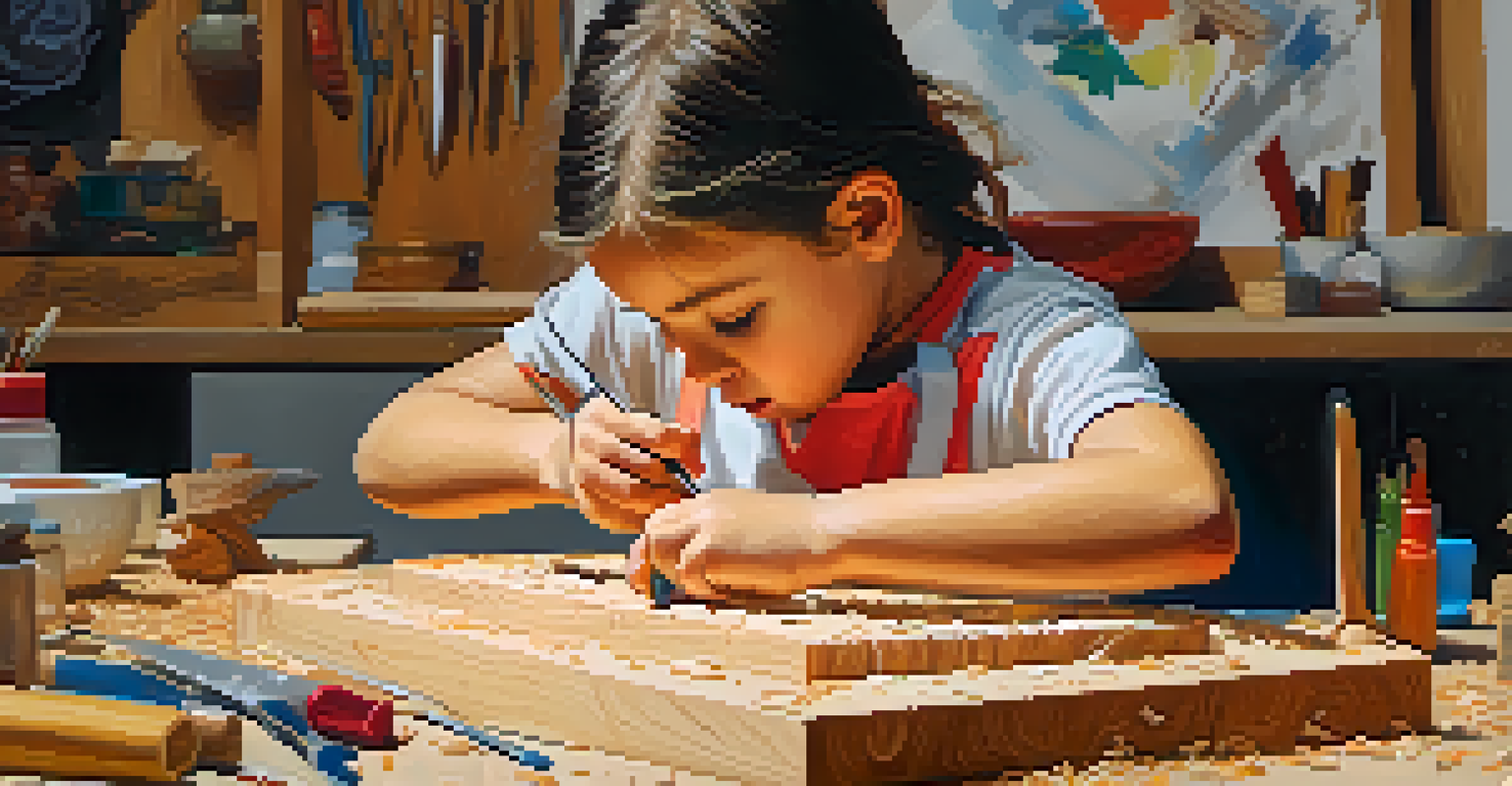Carving with Kids: Safety Measures for Young Carvers

Understanding the Importance of Safety in Carving
Carving can be a delightful activity for kids, allowing their creativity to shine. However, it’s essential to prioritize safety to ensure a fun experience without accidents. Just like wearing a helmet while biking, using the right precautions while carving can prevent injuries.
Safety isn't just a slogan, it's a way of life.
Kids are naturally curious and eager to explore, which is wonderful. But this curiosity can sometimes lead them into unsafe situations, especially when sharp tools are involved. Emphasizing safety first creates an environment where they can express themselves without fear.
Setting the tone for safety helps kids take it seriously. When you explain the reasons behind safety measures, they are more likely to understand and adhere to them. Think of it as teaching them the rules of the road before they start driving.
Choosing the Right Tools for Young Carvers
Selecting the appropriate tools is a crucial first step in any carving project. For young carvers, look for tools specifically designed for children, which are usually safer and easier to handle. It’s like giving them a toy hammer instead of a real one; the right tools can make all the difference.

Begin with simple, non-sharp tools like safety knives or carving kits tailored for kids. These tools allow them to get comfortable with carving without the risk of serious injury. Remember, the objective is to nurture their interest in carving while keeping safety in mind.
Safety First in Carving Activities
Prioritizing safety measures ensures that kids can enjoy carving without the risk of injury.
As they gain confidence and skill, you can gradually introduce slightly sharper tools. Always supervise their progress and ensure they understand how to use each tool properly. It’s about building their skills while ensuring they remain safe and secure.
Establishing a Safe Work Environment
Creating a designated workspace for carving projects is essential for safety. Choose a well-lit area with a sturdy table to minimize the risk of accidents. Think of it as setting up a mini workshop—organization is key to a successful project.
The greatest gift you can give your children is your time and attention.
Make sure the workspace is free from distractions and clutter. This helps kids focus on their carving and reduces the chances of them getting hurt. A clean, organized space is similar to how a chef works in a tidy kitchen—everything in its place leads to a safer experience.
Additionally, consider using protective gear such as gloves or safety goggles. These items can help protect against minor slips or splinters. It’s all about making them feel secure while they unleash their creativity.
Supervising Young Carvers: The Role of Adults
Adult supervision is vital when kids are carving. It’s not just about keeping an eye on them; it’s about guiding them through the process. Think of yourself as a coach, helping them learn the ropes while ensuring their safety.
Being present allows you to step in if they’re using tools improperly or if an accident seems imminent. Your oversight can help prevent injuries and foster a sense of security for the young carvers. Plus, it’s a great opportunity for bonding over a fun activity!
Choosing Tools for Young Carvers
Using child-friendly tools helps cultivate a safe and enjoyable carving experience.
Encourage them to ask questions and express any concerns. This open line of communication can help them feel more comfortable and confident in their carving abilities. After all, carving should be fun, and your support can make all the difference.
Teaching Proper Carving Techniques
Teaching proper carving techniques is essential for both safety and skill development. Start with basic techniques like how to hold a tool and how to carve with controlled movements. Just as you wouldn’t teach a child to ride a bike without showing them how to balance, proper technique is foundational.
Demonstrate each technique clearly and allow kids to practice under your supervision. Encourage them to take their time, as rushing can lead to mistakes and accidents. The focus should be on quality over speed; a well-carved project can be much more rewarding.
Reinforce the idea that mistakes are part of the learning process. Encourage them to correct their errors and try again. This mindset not only builds their skills but also instills resilience—a valuable life lesson.
Emphasizing the Importance of Clean-Up
After the fun of carving comes the often-overlooked clean-up. Teaching kids to clean their workspace is not just about tidiness; it reinforces safety habits. Just like you wouldn’t leave a bike lying around after riding, a clean space reduces the chances of accidents.
Involve them in the clean-up process by making it a fun activity. Create a game out of picking up scraps or organizing tools. This turns a chore into a shared experience and instills a sense of responsibility.
Supervision Enhances Learning
Adult supervision not only ensures safety but also fosters skill development and confidence in young carvers.
Discuss the importance of disposing of sharp scraps properly and storing tools safely. This final step ensures that the workspace remains safe for future projects. It’s all part of cultivating a safe and enjoyable carving adventure.
Celebrating Achievements and Building Confidence
Carving can be a rewarding experience, especially when kids see the fruits of their labor. Celebrate their achievements, no matter how small, to build their confidence. Just like a sports victory, recognizing their hard work can motivate them to continue honing their skills.
Encourage them to share their creations with family and friends. This not only boosts their self-esteem but also helps them appreciate the value of their work. Positive reinforcement can go a long way in fostering a love for carving.

Remind them that every piece they create is a step in their learning journey. Celebrate not just the finished product, but the effort and creativity that went into it. This helps them understand that the joy of carving lies in the process as much as the outcome.